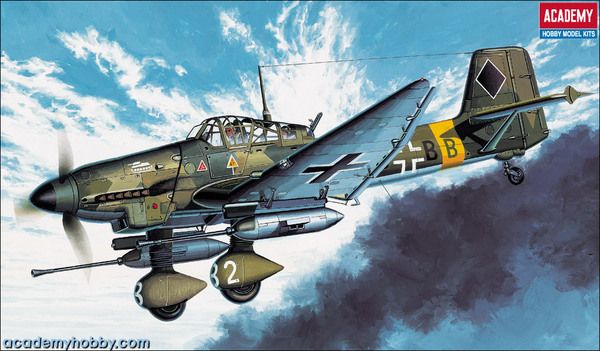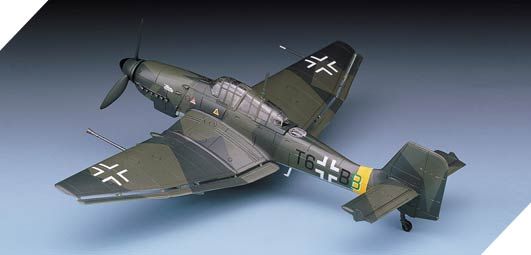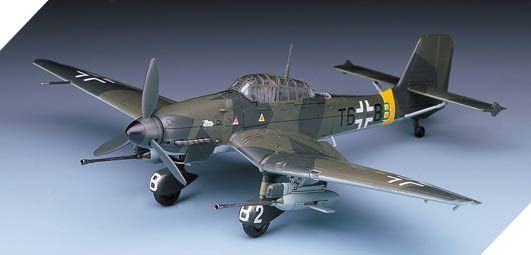The Ju-87 Stuka (short for German Sturzkampfflugzeug, meaning dive bomber) is a German single-engine dive bomber with a classic tail, inverted gull wings and all-metal construction. The Ju-87 is one of the Luftwaffe's most famous aircraft, a symbol of its power alongside the Me-109. At the beginning of the war (1939-1941), it became a symbol of the blitzkrieg, often causing panic among enemy soldiers by installing acoustic sirens (so-called Jericho barrels), which emitted a specific sound during a diving flight. The creator of the machine was Hermann Polman, and the Ju-87 first took to the air in 1935, and two years later went into production. During the Spanish Civil War, without meeting a serious opponent in the air, he was able to prove himself in the missions for which he was created. Thanks to the possibility of a very steep dive while maintaining a relatively low speed, a very high bombing efficiency was achieved. Stuki's popularity was confirmed during his activities in Poland, the Netherlands, France, Greece and Crete. However, during the Battle of Britain, the slow-moving "Stukas" with fixed landing gear were simply outgunned by RAF aircraft, as a result of which they were delegated to attack less protected targets. On the Eastern Front, the Ju-87 played a role primarily as a direct support aircraft and an excellent tank destroyer. Hans Ulrich Rudel - the Luftwaffe pilot who received the most awards, had 519 destroyed Soviet tanks. During the war, production of the Ju-87 was stopped many times, but it always turned out that it had to be restored, because there was no other aircraft that could adequately replace it. During the war, a dozen modifications and modifications of the Ju-87 were created. The Ju-87B (Berta) was the first to be serially produced. It was powered by two versions of the Jumo 211 engine with a mileage of 1000 or 1200 km. He served as a ground-based dive bomber. In turn, Ju-87R (Richard) launched attacks from sea targets. It had a longer range than the B version, but it was slightly slower. Version D (Dora) was the most widely produced and frequently modified. They had new versions of the Jumo 211 engine with a capacity of 1420 and 1500 hp. The Ju-87D had better armor than its predecessors. The last large-scale version of the Ju 87 was the G (Gustav) model, an attack aircraft and "tank destroyer", which entered service in early 1943. The main armament of this version was two 37mm Bordkanone BK 3.7 guns mounted in trays under the wings. The Ju-87G also had improved armor. In total, about 5,900 units of all modifications of the Ju-87 were produced throughout the war. Technical data (Ju-87B variant): length: 11m, wingspan: 13.8m, height: 4.23m, maximum speed: 390km/h, maximum range: 500km, maximum ceiling 8200m, armament: stationary - 3.7, 92 mm, suspended - up to 450 kg of bombs.


















